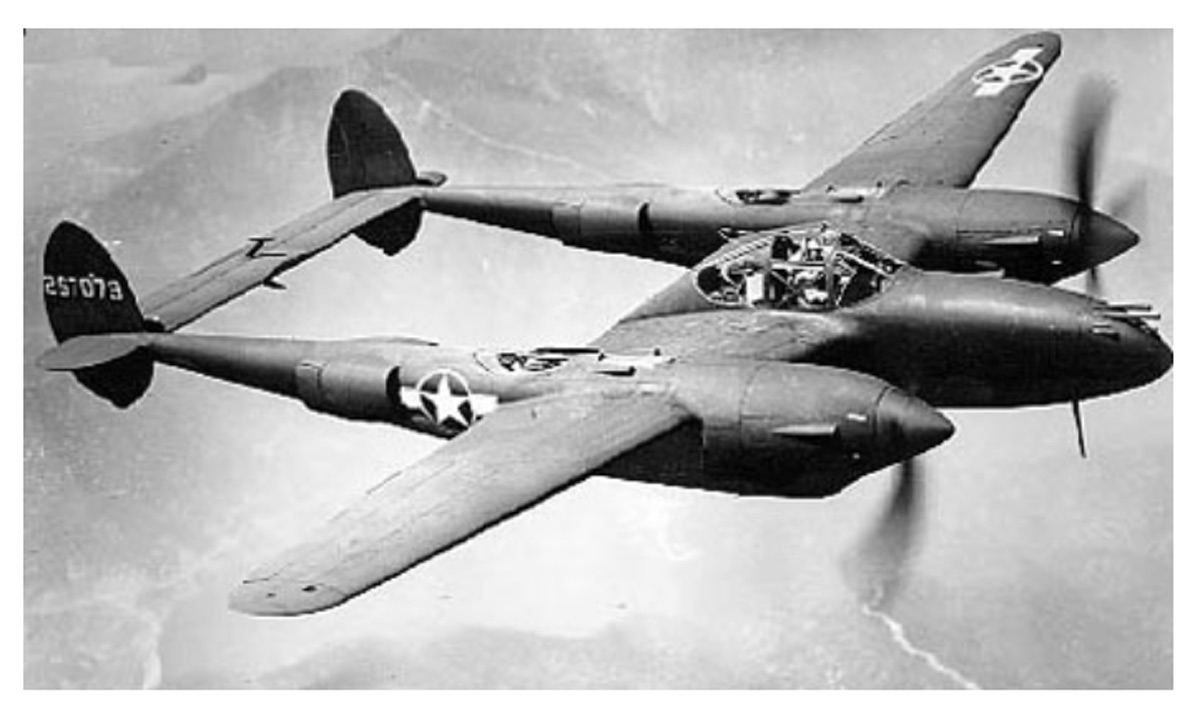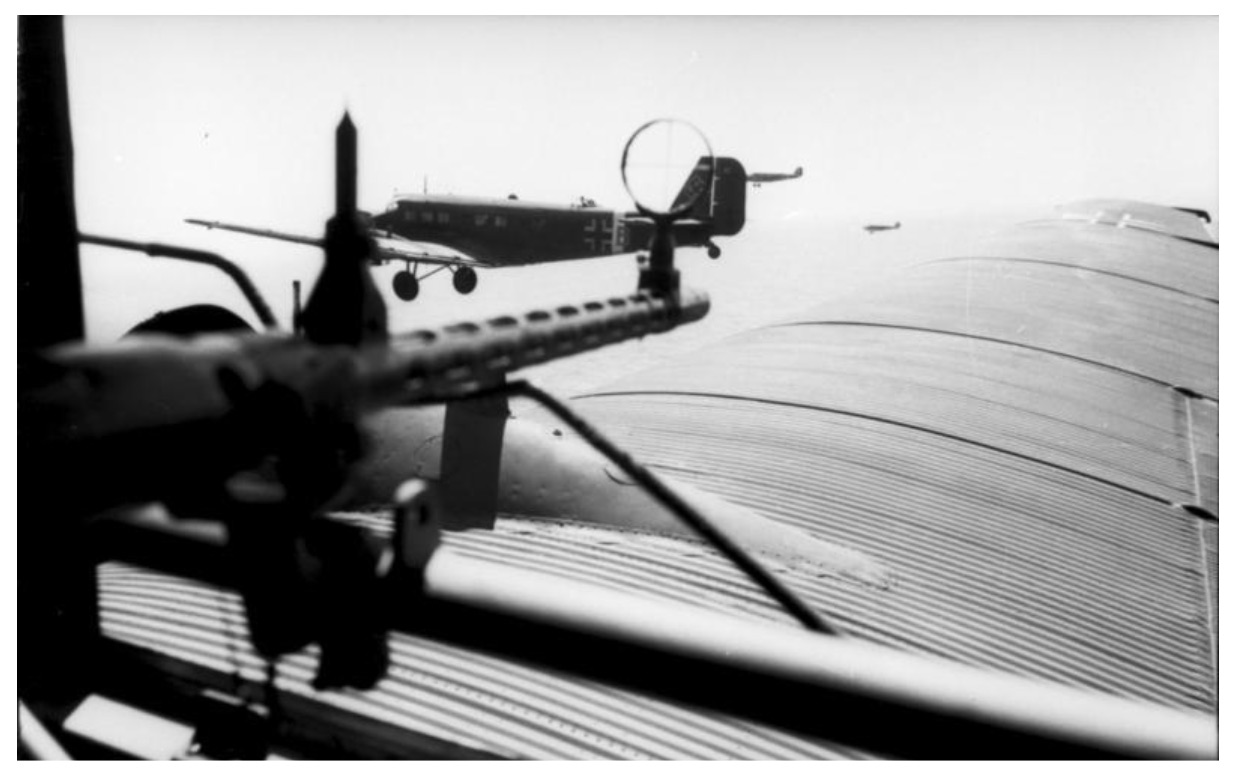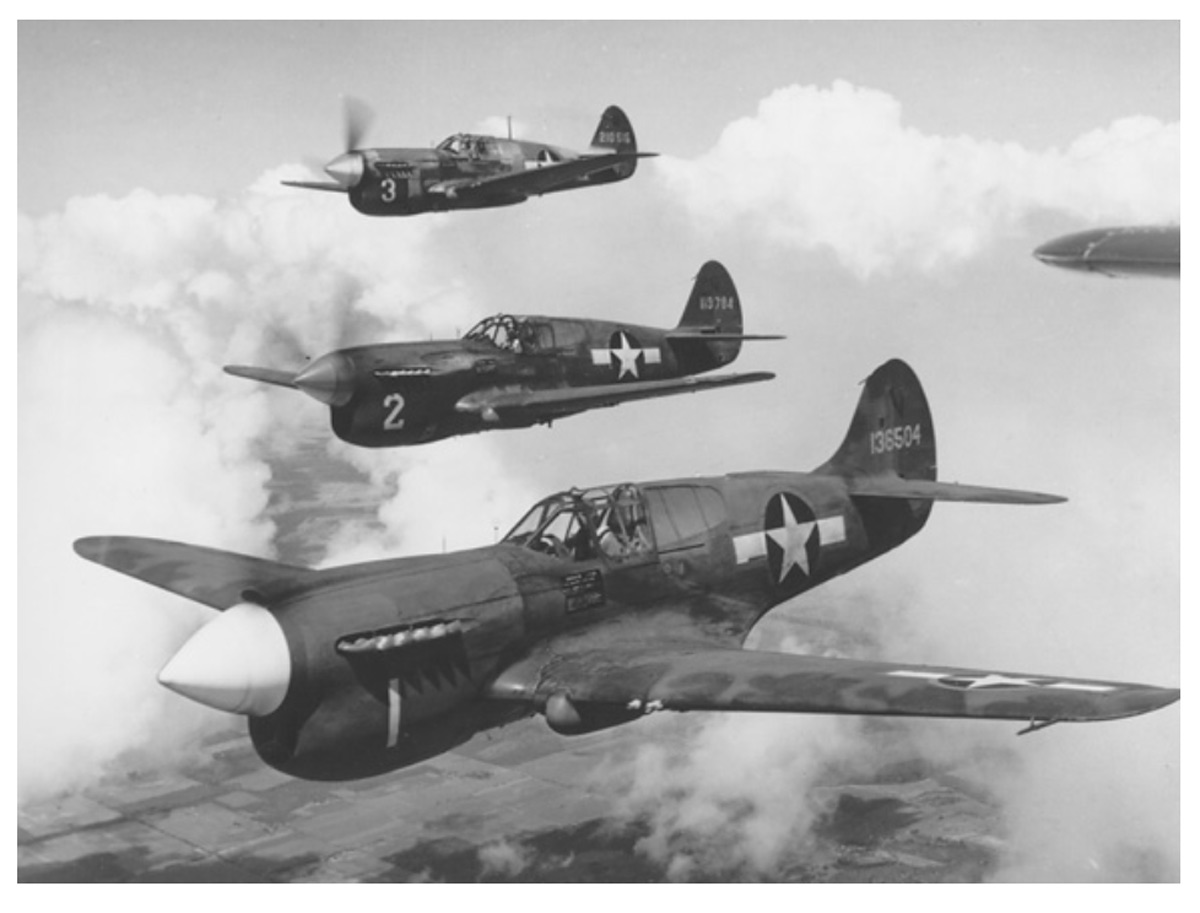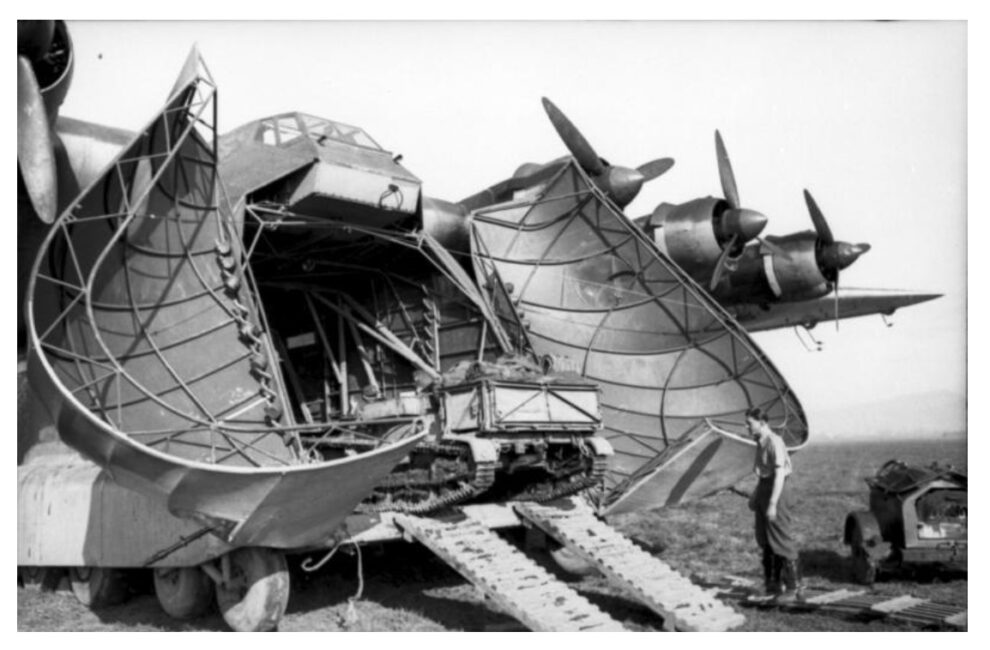Modern mechanized armies need a robust logistics chain to provide fuel, ammunition, and other sinews of war to sustain combat operations. Fighting the Allies during the North African campaign of 1942-1943, German Field Marshal Erwin Rommel’s Afrika Korps (DAK)was resupplied by a concerted air and sea lift effort.
Modern mechanized armies need a robust logistics chain to provide fuel, ammunition, and other sinews of war to sustain combat operations. Fighting the Allies during the North African campaign of 1942-1943, German Field Marshal Erwin Rommel’s Afrika Korps (DAK)was resupplied by a concerted air and sea lift effort. The air element of this logistical pipeline consisted of daily flights of Junkers Ju 52, Messerschmitt Me 323, and Italian Savoia-Marchetti SM-82 cargo planes flying from Sicily and Italy to Tunisia. With Axis transports flying over 100 missions daily, the Allies knew full well the vulnerability of German forces’ supply lines.¹ As part of the joint and combined effort in Spring 1943, the Allied air forces developed a plan to sever Rommel’s lifeline and strangle his forces of needed supplies.
By March 1943, the Axis lifeline used almost 500 airframes of both the German Luftwaffe and Italian Regia Aeronautica. These cargo planes flew from aerodromes in Naples, Palermo, Bari, and Reggio di Calabria across the Strait of Sicily to Axis airfields in Sidi Ahmen and El Aouina, Tunisia.² Usually a dozen or more fighters escorted these lumbering aircraft and their precious cargoes to the African continent. After Operation TORCH in November 1942, Allied airpower grew steadily in strength with the enemy air bridge operation within range of Allied fighters. As the theater matured, air planners were eager to disrupt the Axis air lift operation and reduce the DAK’s fighting potential.

With ULTRA intercepts, use of radar, and other intelligence assets, Allied air planners were fully aware of the Axis airlift schedule and the regularity of their operations. By April 1943, Northwest African Strategic Air Force (NASAF) developed a plan that used P-38 Lightning, P-40 Warhawk, and Supermarine Spitfire aircraft combined with medium and heavy bombers to sweep the straits looking for targets while other bomber and fighter aircraft attacked Axis departure and arrival terminals.³ When the right weather conditions appeared on April 5, 26 P-38s searched for Axis aircraft along with a formation of B-25 Mitchell medium bombers. Approximately five miles north of Cape Bon, the Americans intercepted a mixed formation of more than 50 Ju 52s, 20 Me 109 fighters, 6 Ju 87 Stukas, and 4 Fw-190 fighters along with a dozen merchant vessels sailing below. In the resulting attack the Germans maintained their formation’s integrity but lost 11 Ju 52s, 2 Me 109s, and 2 Ju 87s at the cost of only two P-38s.⁴ Simultaneously, the B-25s attacked surface vessels and destroyed two Siebel ferries and a destroyer, with further claims of the flotilla’s fighter cover suffering 15 losses.

In addition to the actions over the strait, Axis terminal airfields at Sidi Ahmed and El Aouina were attacked by B-17 Flying Fortresses and B-24 Liberators dropping fragmentary bombs. German losses at the Tunis airfield were two Me 323s and two Ju 52s while an attack on El Aouina destroyed 18 Italian and 24 German airframes.⁵ Around noon and timed to attack as Axis aircraft were returning to departure airfields, another set of B-17s struck the Italian Boccadifalco and Trapani aerodromes while B-25s and P-38s went after an airfield at Borizzo. Using fragmentary bombs, the B-25 caused significant damage as German aircraft were not tactically dispersed and parked close together.⁶ As a result of the raid, the II Group Jagdgeschwader 26’s historian reported:
It was an attack such as [I] had never been experienced even by those hardened by service in Africa! Bombs fell like hail on the airfield bursting like rolls of thunder and enveloping the entire area like a creeping barrage.⁷
Later that day, P-38s patrolling the straits found little Axis air activity after the Allied attacks. Estimates placed enemy losses at over 200 aircraft, with 40 of them destroyed on the ground. After the day’s battle, the Luftwaffe could only muster 29 airworthy Ju 52s. Post-war analysis found the Germans recorded the loss of 14 Ju 52s and 11 transports destroyed on the ground (Ju 52s and Me 323s), with 67 aircraft damaged.⁸ The Allied losses were significantly less with just three planes lost and six missing. In addition to the loss of the planes, the Germans also failed to deliver the all-important supplies to the DAK.
While the April 5 operation was a success, the Allies continued to press the Luftwaffe and their airlift operations. In the following weeks, Axis losses continued to mount as on April 10 another P-38 sweep netted 20 transports attempting to fly in at low level. Later that day, B-25s downed another 25 planes. The numbers of aircraft shot down vary from source to source, with the Germans reporting losses appreciably less than the Allied claims. Conflicting numbers aside, the Axis was indeed losing precious airlift assets it could not afford to while the DAK suffered from a lack of provisions. The following day, P-38s again found Ju 52s over the straits from Marsala to Cape Bon at 0800 flying just above the waves and added another 26 transports to the tally along with five escorts.⁹ However, for the Luftwaffe, the worst was yet to come.
In the late afternoon on April 18, Palm Sunday, the 57th Fighter Group flying P-40s spotted a large formation of German transports. Flying again at wavetop level were an estimated 90 German Ju 52s flying in three large “vic” formations.¹⁰ Despite flying low to avoid being seen on radar or with the naked eye, the setting sun worked in the Allies’ favor. The sunlight illuminated the transports as glistening specks against the dark sea below, creating a sharp contrast. One airman described the massive formation as “resembling a huge gaggle of geese.” Another American pilot observed: “They were the most beautiful formation I had ever seen. It seemed a shame to break them up as it looked like a wonderful propaganda film.”¹¹ With one American fighter squadron providing top cover, three others dove into the German formation. P-40s darting in and out of the vics took a heavy toll on the Ju 52s, with some falling into the sea while others crashed along the shoreline or further inland.¹² The lumbering Ju 52s were sitting ducks for the American fighters and the few escorts the Luftwaffe sent were quickly overwhelmed. American crewmembers even reported seeing Axis soldiers in the transports firing their weapons out of windows at the marauding P-40s.
Getting back to their base the Americans claimed 59 Ju 52s, 14 Me 109s, and 2 Me 110s. A reconciliation with German records shows the number of planes lost generally reflects the American totals. However, the Luftwaffe claimed that most of the Ju 52s reported lost were not shot down; rather, 35 conducted forced landings. Conversely, the Americans lost six P-40s in the attack. Adding insult to injury, a South African P-40 unit departing the next morning at dawn ran into a formation of German transports, dispatching another 15.¹³

As German transportation assets dwindled with increasing pressure from both the British and US forces on the ground, the DAK’s position in Tunisia became untenable. Running out of fuel, ammunition, and other materials, the Germans eventually evacuated through Tunis. By May, only a few forces remained. These Allied attacks, combined with raids on departure and reception airfields, significantly reduced German logistical capabilities. While Operation FLAX’s legacy was helping to strangle the Axis forces in Africa, it had a significant effect on surviving Luftwaffe personnel. Knowing the Allied penchant for attacking the transports over the strait, when it came time to evacuate ground personnel, many of them avoided flying in a Ju 52, opting instead to squeeze into the fuselages of departing Me 109s. While hardly plush accommodations, it did avoid the danger of being a sitting duck over the strait. Such movement of ground personnel in this manner would become an established practice as German forces were pushed back by the victorious Allies.
¹ Wesley Frank Craven and James Lea Cate, The Army Air Forces in World War II, Volume II: Europe: Torch to Pointblank, August 1942 to December 1943, (Chicago IL; University of Chicago Press, 1949), 189; Christopher Shores, Hans Ring, and William Hess, Fighters over Tunisia, (London; Neville Spearman, 1975), 281.
² Craven and Cate, 189.
³ Ibid.
⁴ Craven and Cate, 189-190; Shores, Ring, and Hess, 289-290.
⁵ Shores, Ring, and Hess, 291.
⁶ Craven and Cate, 190; Shores, Ring, and Hess, 290.
⁷ Shores, Ring, and Hess, 290.
⁸ Craven and Cate, 190.
¹⁰ Shores, Ring, and Hess, 302; Craven and Cate 190. Again the references disagree on the number shot down.
¹¹ Shores, Ring, and Hess, 322; Craven and Cate, 191.
¹² Shores, Ring, and Hess, 322.
¹³ Shores, Ring, and Hess, 322-325.Craven and Cate 191.
Source : The National WWH Museum
















